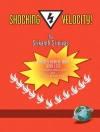The progression from newborn to sophisticated language user in just a few short years is often described as wonderful and miraculous. What are the biological, cognitive, and social underpinnings of this miracle? What major language development milestones occur in infancy? What methodologies do researchers employ in studying this progression? Why do some become adept at multiple languages while others face a lifelong struggle with just one? What accounts for declines in language proficiency, and how might such declines be moderated?
Despite an abundance of textbooks, specialized monographs, and a couple of academic handbooks, there has been no encyclopedic reference work in this area–until now. The Encyclopedia of Language Development covers the breadth of theory and research on language development from birth through adulthood, as well as their practical application.
Features:
- This affordable A-to-Z reference includes 200 articles that address such topic areas as theories and research tradition; biological perspectives; cognitive perspectives; family, peer, and social influences; bilingualism; special populations and disorders; and more.
- All articles (signed and authored by key figures in the field) conclude with cross reference links and suggestions for further reading.
- Appendices include a Resource Guide with annotated lists of classic books and articles, journals, associations, and web sites; a Glossary of specialized terms; and a Chronology offering an overview and history of the field.
- A thematic Reader’s Guide groups related articles by broad topic areas as one handy search feature on the e-Reference platform, which includes a comprehensive index of search terms.
Available in both print and electronic formats, Encyclopedia of Language Development is a must-have reference for researchers and is ideal for library reference or circulating collections.
Key Themes:
- Categories
- Effects of language on cognitive development
- Fundamentals, theories and models of language development
- Impairments of language development
- Language development in special populations
- Literacy and language development
- Mechanisms of language development
- Methods in language development research
- Prelinguistic communicative development
- Social effects in language acquisition
- Specific aspects of language development
Om författaren
Vera Kempe completed her undergraduate degree in psychology at Moscow State University and her Ph.D. at Humboldt University Berlin (Germany), where she studied sentence processing under the supervision of Friedhart Klix. She then worked as a post-doctoral research fellow with Brian Mac Whinney at Carnegie Mellon University and with Stephen Christman at the University of Toledo (Ohio). During this period, she became interested in the cross-linguistic study of first and second language learning, and used experimental and computational methods to study how distributional characteristics of morphosyntax affect learning and processing in different languages. Kempe subsequently held faculty positions at the State University of New York, Oswego, and at Stirling University in Scotland. Currently, she holds the position of Chair of Psychology of Language Learning at Abertay University, where she lectures in developmental psychology, lan-guage development, and individual differences. Her research examines how characteristics of the language input, especially those found in child directed speech, interact with individual differ-ences in the learner’s cognitive abilities to shape the process of language learning in children and adults. Her interests also include the interaction of emotion and communication, acquisition and representation of dialects, as well as evolutionary perspectives on language acquisition and use. Together, Kempe and Brooks developed a methodology that harnesses the strict control of lan-guage input found in artificial language learning studies to examine the simultaneous acquisition of phonology, morphosyntax, and vocabulary of natural languages in the laboratory. Kempe has authored or coauthored over 50 scientific papers and book chapters including the textbook Language Development, coauthored with Patricia J. Brooks.












